Google Daydream View review: Can Pixel-power wake mobile virtual reality from its slumber?
Android's gatekeeper vies for the mobile virtual reality crown.
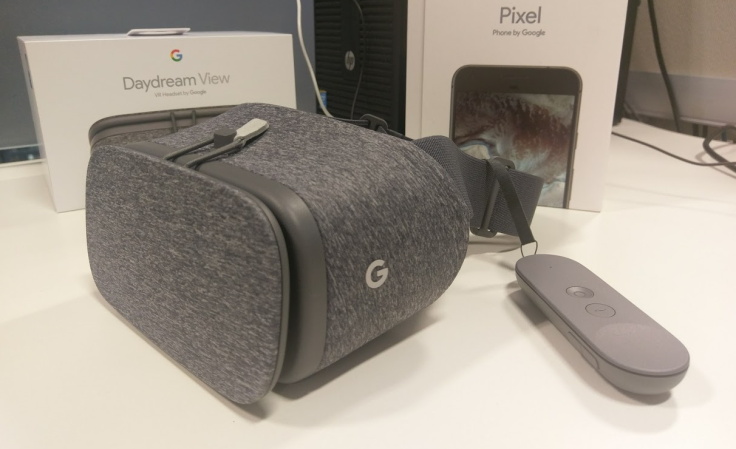
As 2016 edges to a close, it is safe to say that the 'virtual reality revolution' hasn't exactly come to pass in the way some tech experts predicted.
While the elite VR market – occupied by the HTC Vive, Oculus Rift and PSVR – has been something of a tough sell to the average punter, virtual reality's largest stumble lies in the budget, entry-level market, where sub-£100 mobile VR headsets are ten a penny, but by and large not worth a tuppence.
The daunting number of novelty smartphone-powered VR kits has reached absurd levels at this point, with more and more tech companies looking to ride the wave of the 'next big thing in tech', but only succeeding in further saturating an already muddled and confused emergent field.
Enter Google.
After paddling in the VR waters with Google Cardboard, the Alphabet company has decided to go all-in, providing mobile VR with a key ingredient in an attempt to end the nightmare; a platform called Daydream.
The tech giant has also launched its own Daydream headset - the eye-catching Daydream View - which launches today (10 November). The question is: Can Google wake mobile VR from its slumber?
Google Daydream View: Design
Breaking free of the standard plastic-tastic mobile VR designs plaguing the market, the Daydream View's clothing-inspired construction is both bizarre and brilliant in equal measure.
When passed around the office a colleague immediately compared the fabric finish to a pair of pyjamas - a fitting style considering its moniker.
The result is an incredibly lightweight and portable HMD that makes a mockery of its closest rivals in the comfort stakes. Whether it's the soft, cushioned padding around the eyes or the cool, breathable material, strapping yourself into the Daydream View is as snug and enjoyable in the fifth minute as it is the fiftieth.
One trade-off, however, is light leakage, as the base and sides of the Daydream View leave quite significant gaps around your peripherals and the nose area. This eases the issue of facial pressure, but in brightly lit areas the open space does result in pesky reflections on the lenses from time to time.
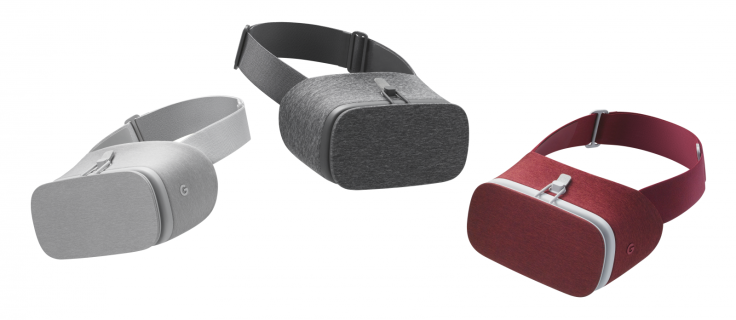
Various smartphone manufacturers have pledged support for Daydream, which poses a design problem on paper considering the variety of devices with different dimensions that are expected to fit in the View.
The front flap and overall design of the phone compartment abates a lot of these fears though, as a pair of stretchable plastic hinges results in a universal holder for your smartphone (and even those protected with a case).
Multiple rubber pads also protect the phone from damage and hold it firmly in place. At no point during my head flailing antics did I think that the enclosed Pixel XL was in any danger of flying across the room.
Finding a sweet spot on your head can take a few seconds when donning the Daydream View, but once you've found it you'll sometimes forget you even have it on.
Google Daydream View: Setup, controls and display
Now we come to Daydream View's killer feature - the motion controller.
Anyone who has clasped their hands around a Nintendo Wii controller will be familiar with the Daydream View's three-axis pointer. In short, the "wand" makes the immediate Daydream experience an intuitive joy and trounces alternatives, such as Samsung's head-mounted D-pad on the Gear VR and other accelerometer-based control schemes.
This isn't the first time we've seen a motion controller bundled with a budget VR headset, but its combination of a trackpad, a developer-configured contextual button, a home button and mostly accurate gesture recognition is simple, versatile and deeply satisfying to use.
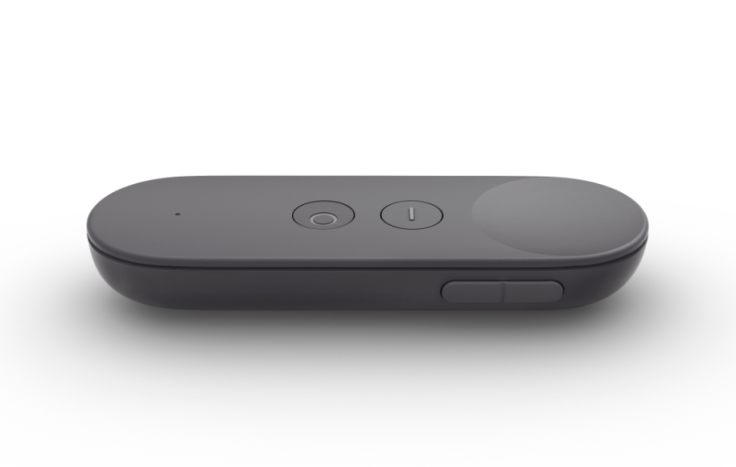
The pointer can go wayward from time to time, however a quick reset (by holding the home button and facing the controller and display forward) fixes most niggles. This isn't always the case at the moment though, as there were more than a few occasions where the connection (via Bluetooth) seemed to suffer, resulting in the pointer going haywire for up to ten seconds. Hopefully a software update will put these issues to bed.
In terms of the headset itself, the Daydream View sticks to the functionality established with its cut-price Cardboard and applies it on a grander scale. The lack of ports - unless you want to use headphones - removes much of the set-up faff. It's grab phone, click app, in the slot and go for the most part.
As for the visuals, well, they are fine, and to be honest you can't ask for more considering the Daydream View retails at £69.
Compared to the Vive or PSVR, the virtual reality experience of Daydream View and its mobile peers will always be found lacking due to field-of-view restrictions and hardware power, but it is worth noting that the choice of phone will effect the resolution.
At launch, the roster of Daydream-compatible phones is limited to Google's Pixel and Pixel XL smartphones which sport 1080p and Quad HD displays respectively. As such, the latter provides crisper visuals. This will be the case for any smartphones that join the Daydream family in the future, so any potential buyers may want to be mindful of this in the coming months.
Google Daydream View: Software, apps and games
Pop on the Daydream View and you are greeted with an excellent introductory app that eases you into the Daydream experience. Past that what you are left with is a woodland-themed half-recreation, half-re-imagining of an Android app drawer on VR-scale.
Scrolling panels with the trackpad works beautifully and the controller's pointer limits the amount of unnecessary head movement.
One concern that quickly became apparent in our tests was the heat emanating from the phone itself. While you won't notice while lost in the many virtual worlds on offer, our Pixel XL was approaching marshmallow-roasting territory after a 30 minute stint - expect your phone's battery life to take a significant hit.
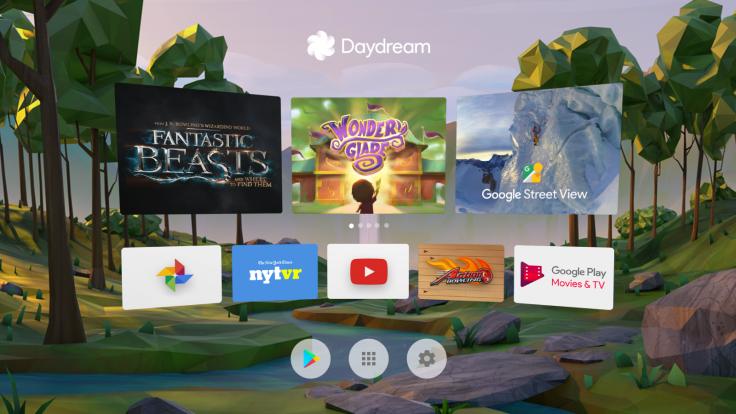
This also resulted in a serious case of lag in the garishly twee mini-game fest, Wonderglade. The carnival-themed free app (with in-app purchases) performs well for the most part, but the first-person 'Magic Mayhem' portion - where you slap projectiles out of the air with a magical staff - dropped to nausea-inducing latency levels, which only improved once the phone had cooled.
In general though, mobile game-lovers will find plenty to enjoy here thanks to the Daydream View controller. The isometric shooter Hunters Gate, for example, uses the pointer as an aiming reticule, while the trackpad is used to direct your in-game avatar. With games like Gunjack 2 and Earthshape on the way - the latter from acclaimed Volume and Thomas Was Alone creator Mike Bithell - gaming on Daydream is making a bright start.
Delving into Daydream's VR Play Store also offers up the experiential VR apps, and it's here that Daydream excels.
Thanks to Google Cardboard and Google's Android suite as a whole, the Daydream View and the Daydream ecosystem have a solid base to work from and it shows. 360 degree videos on YouTube are a delight and the wealth of VR-friendly videos on the platform is growing by the day.
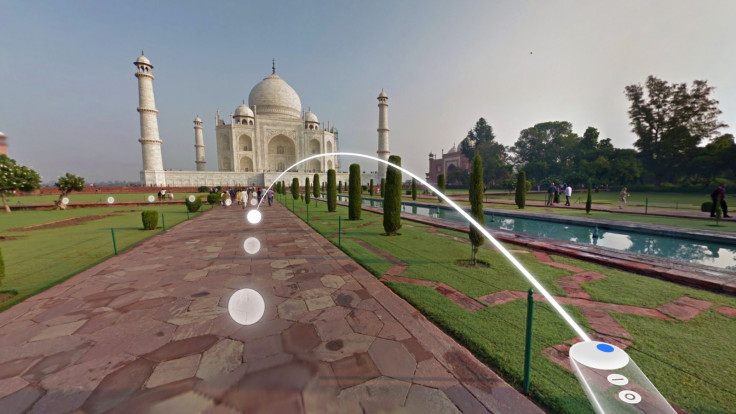
Google Photos and Google Arts & Culture fall a little flat, with neither your own snaps or the post-impressionist work of Van Gogh benefiting from the lowly resolution, but Street View in VR is still one of the best things to come out of the technology, as you globe hop back to holiday locations or check in on your childhood home with a full 360 degree visual span.
Early signs of high-profile support are strong too, with apps from the BBC, Netflix, The Guardian, CNN and a fun-looking tie-in for Harry Potter spin-off Fantastic Beasts and Where to Find Them all coming to Daydream before the end of the year. Expect the list to expand even further when developer kits go out to third-parties in December.
From the moment you first see and touch the Google Daydream View, the disparity between the new king of mobile virtual reality and its cookie-cutter rivals is obvious.
For £69, Google Pixel onwers would be crazy to miss out, while the Pixel-less among us will likely not have long to wait until other manufacturers join the Daydream party.
While the triumphs of its lightweight, delightfully tactile design and superbly intuitive controller are worthy of high praise, Daydream View's home run lies in its elegant balance of hardware and software - a symbiosis of product design and OS ecosystem that comes within milimeteres of achieving mobile VR's "iPhone moment".
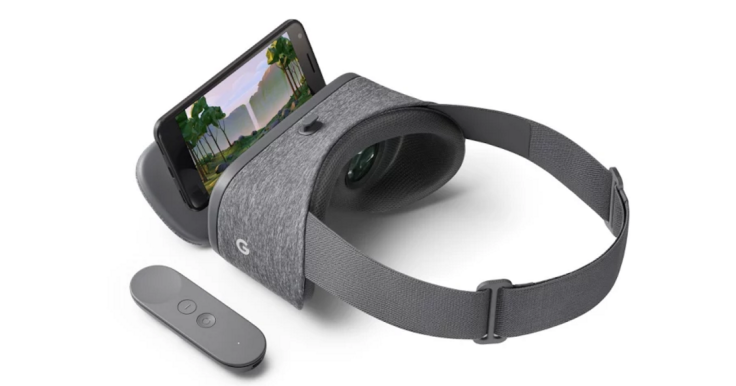
© Copyright IBTimes 2025. All rights reserved.






















